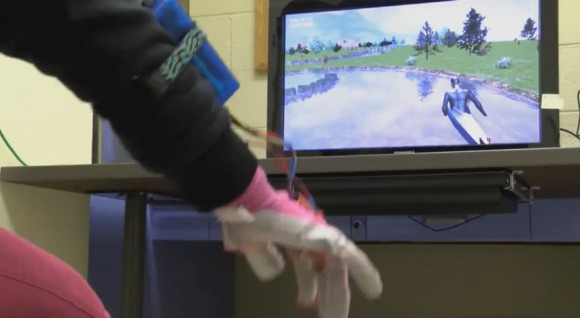Xbox Kinect Helps Stroke Patients Regain Freedom Of Movement
Physical therapy researchers at Ohio State's Wexner Medical Center are developing a home therapy program for stroke patients, and the Xbox Kinect plays a central role. It involves a home-brewed game called Canyon Adventure, in which patients paddle a canoe down a river, swat bats in a cave, snag litter out of the water, go fishing, navigate the rapids, and catch objects like medical supplies and treasure chests. The program helps patients regain motor control from the comfort of their own homes.
The treatment is called constraint-induced movement therapy, and it is usually only available to about 1% of those who need it. It relies on weighing down or otherwise partially immobilizing the fully functioning side of a stroke patient's body, and assigning tasks to perform with the affected side. In the case of the Ohio State research program, the patient-gamer's dominant hand dons a weighted mitt and rests on the lap, while the affected side controls the game via the Kinect.
The condition is called hemiparesis–"half immobile"–and it affects around 325,000 stroke survivors–80% of them–every year. Ninety-nine percent of hemiparesis sufferers can't access constraint-induced movement therapy because of the commute; they just can't get to a qualified medical facility often to make a difference. But the treatment works very, very well, according to lead researcher Lynne Gauthier. If it can be shown to work on a home gaming system with motion sensor technology, the therapy could be extended to a much larger portion of patients.

The gaming aspect of the therapy is intended to help the time pass. While the graphics of Canyon Adventure are obviously prototypical, patients tend to get lost in the game while exercising, sometimes doing 1500 movements an hour without even realizing it. "We always ask them, 'How long do you think you played'?" Gauthier said. "And participants will say, 'Oh, you know, maybe ten minutes.' And some of them had played forty minutes at that point."
SOURCE: Ohio State University
VIA: Geekosystem
